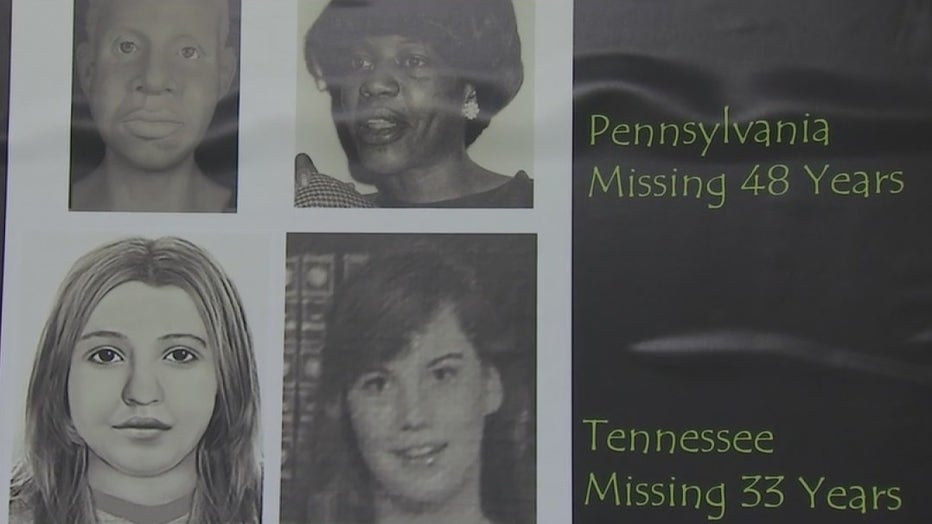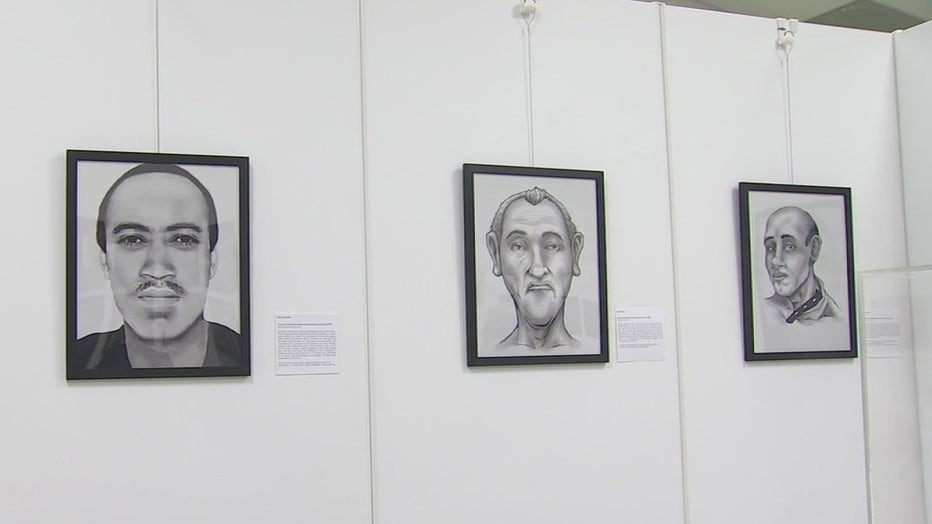Giving names to missing, unidentified people through art

Art exhibit aims to identify John and Jane does
The display created by forensic anthropologists inside the Museum & Heritage Center in Sulphur Springs is made up of clay busts, drawings and composites, all real people who've been unidentified for years.
SULFUR SPRINGS, Fla. - Not all missing persons cases -- like Miya Marcano's and Gabby Petito's -- get the attention they need or deserve. An annual art exhibit continues to change the tide on solving cases that have gone cold.
"The Art of Forensics" opened this week at the Sulphur Springs Museum and Heritage Center. It's a display put together by anthropologists at the University of South Florida to help solve unidentified cold cases.
The exhibit is made up of clay busts, drawings, and composites – all real people who've been unidentified for years.
"Pay attention to this person and see if it jogs their memory," said Kelsee Hentschel-Fey, a forensic lab manager from USF. "It is not an exact science but we're just trying to make it look similar to what the person looked like."

They use a combination of scientific data, collected evidence, and artistry to bring these souls to life.
"The skulls have tissue depth markers and so certain points on the face we know what the depth of that tissue will be so we can use that to then recreate a rough appearance of what that person might look like," she said.
The yearly exhibit started in 2015. Over that time, it's helped close nearly two dozen cases.

"It’s such an amazing feeling when we get a solved. We've had 10 over the last few years. It is rewarding to know you helped in some way," she said.
The exhibit runs through November 3. For information, visit https://www.sulphurspringsmuseum.org/current-exhibits.

